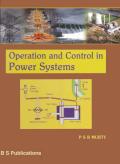1 Introduction 2 Load Flow Analysis 3 Economic Operation of Power Systems 4 Optimal Load Flow 5 Unit Commitment 6 Load Frequency Control 7 Control of Interconnected Systems 8 Voltage and Reactive Power Control 9 Introduction to Advanced Topics
文件格式: PDF大小: 14.34MB页数: 419
Introduction Secure state Security analysis-linear sensitivity analysis method
文件格式: PDF大小: 1.12MB页数: 31
Introduction Optimal power flow model Solution of optimal power flow by linear programming
文件格式: PDF大小: 999.47KB页数: 31
Introduction-Why we need state estimation in power system Problem Formulation Case Study Advanced topics: Hybrid Power System State Estimation (with SCADA and PMU) Placement of Meters Power System Sensor Network
文件格式: PDF大小: 763.1KB页数: 26
Introduction Phasor Measurement Unit (PMU) Control based on WAMS state of arts and development trend
文件格式: PDF大小: 3.27MB页数: 41
Introduction Concept of Reactive power in power system Control and management of reactive and voltage Difference between active power & frequency regulation Importance of voltage control Measures for voltage control Rules of reactive compensation and voltage control Excitation control of generator
文件格式: PDF大小: 1.34MB页数: 30
Introduction Mathematical model Generator model Load model Prime mover model Governor model Tie-line model Automatic Generation Control (AGC:自动发电控制)
文件格式: PDF大小: 2.34MB页数: 63
Introduction Solution of Unit Commitment Solution of Unit Commitment with Dynamic Programming
文件格式: PDF大小: 0.98MB页数: 27
Introduction Problem formulation Characteristics of prime mover-generator Model of economic dispatch and its solution Economic dispatch considering line loss Gradient method Newton method Dynamic programming Co-dispatch of thermal and hydro plants
文件格式: PDF大小: 2.37MB页数: 64
Development of Power Grid: state of art Induction to Power System Operation Operation status and constraints of power network Power system dispatch Power system model
文件格式: PDF大小: 2.94MB页数: 41










